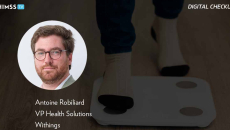Connected Health
Remote Patient Monitoring
The strategy has had a big impact on patient access, bed capacity, and heart failure and all-cause readmissions – not to mention appreciation of patients and family thankful to receive care safely at home instead of having to be admitted to the hospital.
The health system said the partnership with Amazon One Medical will bring new primary care offices to the Cleveland region to improve the patient experience at every touchpoint.
Remote Patient Monitoring
MD Home Health CEO explains why the organization embraced the four-pronged, technology-infused style of home health and how the approach should streamline delivery and improve patient outcomes.
The new artificial intelligence enhancements for healthcare promise to unlock conversational data for clinical insights and support app development, reporting, imaging and other use cases while enhancing trustworthiness.
Remote Patient Monitoring
An expert discusses the combination of RPM and artificial intelligence, with examples of how tools are being developed and used today to improve patient access and expand virtual care.
A maternal fetal medicine physician at Children's Hospital Colorado shares a virtual care success story, with telemedicine delivering critical care for high-risk pregnancies across a vast region of the state and beyond.
The convergence of physician shortages, efficient use of hospital beds and hybrid working models contributes to the growth of inpatient telemedicine. The health system's programs address critical constraints and boost patient outcomes.
The company's digital health tools – smart scales, blood pressure monitors and other wearables – allow patients to monitor their health at home, says Antoine Robiliard, VP at Withings.
Overburdened Wi-Fi networks may not be sufficient to meet these needs and cellular signals can vary in strength within a building, impacting patient care and experiences.









